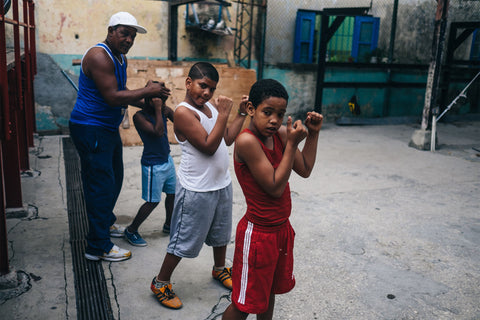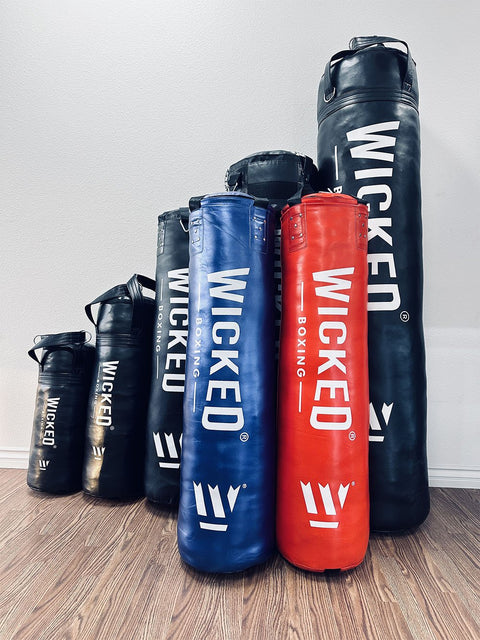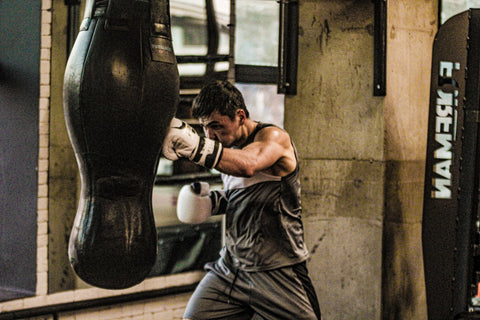Introduction
Boxing is an amazing sport with millions of fans from around the world following its events and thousands practicing it to achieve their goal of becoming a champion. This great community is expanding on a daily basis with more people joining it. However, for newcomers, it might be a little hard - at least in the beginning, to get familiar with the techniques and motions used in this combat sport. Therefore, to help them have a smooth entry, in this blog we will cover some of the most popular and widely used boxing moves and techniques.
The Jab
A sudden, quick, and straight punch thrown with the lead hand. It is used to gauge distance, disrupt an opponent's guard, and set up power punches.
To practice a Jab, start in your boxer stance with your hands next to your nose, the back heel slightly off the floor, fists closed, and fingertips facing your chin. As you throw your punch, twist the knuckles of your hand so that when your arm is extended, your fingertips face the floor. Since a Jab punch is usually followed by a Cross punch, make sure to be ready by making your rear hand tight in a tight fist, tucked, and ready to throw.
Another important point to keep in mind is that your lead hand immediately returns to its initial guarding position so that your rear hand can throw the Cross punch; often the Jab return and the Cross punch happen simultaneously in opposite directions.
The Cross
A powerful straight punch thrown with the rear hand, is used to score points, knock out the opponent, and as a counter punch.
To through this type of punch, be in a boxer stance with the weight mostly in your front foot, knees slightly bent, and fists closed with fingertips facing your chin. As you throw your punch, pivot on the ball of your back foot, rotate your hips forward while Your fingertips should face the floor and your arm is fully extended. And finally, return to the initial guarding position.
The Hook
A punch thrown with a circular motion and usually with the rear hand. It is used to catch opponents ofguard and target the head or body.
Practicing the Hook punch is mostly identical to the Cross, except that your rear foot pivots a little bit more and your rear hand elbow bent to 90-degrees.
The Uppercut
A vertical punch thrown with a rising motion and usually with the rear hand. It is used to target the chin and body.
To practice it, be in the same position and motion as you might throw a Hook, except that this time you rear hand bent vertically to 90-degrees which your knuckles facing the sky and fingertips facing you.
The Slip
A defensive technique in which the boxer moves their head slightly to the side, allowing punches to slip past them. The main purpose of slipping is to cut off the opponent’s punch and put your body in balance for a counter punch.
To practice the Slip, start in your boxing stance with your fists up to guard. If your opponent throws toward your right side, rotate from your waist to the left, drop your left shoulder, bend your knees, and crunch to the left to slip outside the line of your opponent's shot. Do the opposite if your opponent throws on your right.
The Roll
it is primarily a defensive movement used to avoid opponent's hooks by bending your knees and shifting the weight from the lead side to the backside, and vice versa (rolling in vs. rolling out
The Bob and Weave
A defensive technique in which the boxer ducks and moves their head and upper body in and out to avoid punches.
The Footwork
A technique in which the boxer moves his feet to create distance, maintain balance, find defense gabs and set up punches.
Conclusion
The boxing moves and techniques outlined in this blog are the most important ones, but not all of them. Mastering them requires lots of practice and repetition. Also, to make the most out of them, it's crucial to use them in conjunction with each other and not to rely on one specific technique.




